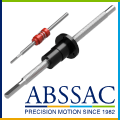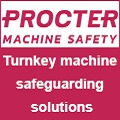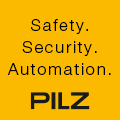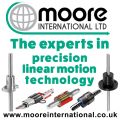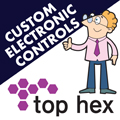
Posted to News on 27th Sep 2016, 12:24
The 'I's have it - the three pillars of automation
As the trends towards digitalisation and the mobile information society gather momentum, consumers are demanding more information about the origin and content of the products they buy. Furthermore, they expect products, information and services to be increasingly targeted and personalised. This is how Omron sees the future.
Smart factories, with efficient and fully connected supply chains, are critical to manufacturing innovation. Since the term "Industrie 4.0' (aka Industry 4.0, the Internet of Things or the Fourth Industrial Revolution) was introduced by the German government in 2011, many similar initiatives have been undertaken around the world. These all share common aspects: a higher degree of connected devices, machines and IT; and changes in consumer behaviour driving changes in society. These changes are often amplified by additional changes in legal frameworks.
These developments are facilitating new production methods, intelligent process optimisation, and higher machine utilisation and production yields. In support of this, Omron's "Innovation by Automation' philosophy is based on three key pillars:
- Integrated Automation
- Intelligent Automation
- Interactive Automation
Integrated Automation - integration through advanced control
Any fully automated plant requires synchronous control of all machines and devices. Advanced integration of logic, motion, safety, robotics together with database connectivity all using open networks and communications protocols greatly assist this process. Omron's integrated automation platform, Sysmac, provides the performance and functionality needed for a wide range of installations, from simple machines to complete manufacturing cells. At the core of this platform is synchronous control of all machine devices. Advanced functionality, such as motion, robotics and database connectivity is supported by a simple uniform architecture and standard communications protocols, including:
- EtherNet/IP for connecting to the local and wider operational environments
- EtherCAT for deterministic, fast machine communication
- IO-Link for integration of components
Sysmac provides a single Integrated Development Environment (IDE) software for configuration, programming, simulation and monitoring software, operating in real-time. The many features include:
- Function blocks: standard PLCopen, plus Omron-generated
- Direct synchronous control: for position, speed and torque
- Safety-related data: synchronised with the whole network
- Safety functions: muting, guard-locking, safety door monitoring are simple to manage
- Secure data: in the event of a server going down or losing connection, data is automatically stored in internal memory
- Databases: Sysmac communicates in real-time with databases such as SQL. The high speed [1000 table elements/100 ms] ensures "big data' processing power to improve productivity and aid predictive maintenance
- Code verification: time-stamped and serialised code verification, with print-quality grading information
- Shape detection: shape search technology provides more stable and accurate object detection for pick & place projects
- Robotics: up to 8 delta robots with one controller
- Robotic function blocks: time-based to make programming easier
- Sensing: Process parameter setting and transfer with full control via IO-Link for efficient change-over handling
- Sensing: High-precision detection and positioning data: synchronised on the network
Intelligent Automation - turning factory floor data into high-value information
Data collected from all relevant machine elements, including product quality inspection data, provides the basis for visualising and analysing machine and process performance intelligently. Omron's new generation of machine controllers provides an integrated SQL-database interface, where all collected data can be evaluated in a secure, fast and simple way. And with remote monitoring functionality, all performance and process parameters are accessible from any desired location.
A typical schematic remote monitoring process involves:
- Collecting relevant production data and building statistics on performance
- Learning thresholds to detect trends prior to realise machine stops for predictive maintenance
- Providing real-time indicators at the machine and to remote PCs or mobile devices
- Realising fast troubleshooting
- All key components can be easily reset with the touch of a button
- Monitor all EtherCAT-connected devices via the built-in troubleshooter on the NA series HMI
- Complete machine programs and parameter sets can be restored via an SD card
- Monitor key process parameters to provide early warnings
Interactive Automation - harmonious interaction between humans and machines
The use of robots in production lines is increasing significantly, even outside traditional application areas. With a rising demand for customised (personalised) products, requirements for flexibility in automation are also growing. In application areas where the flexibility and cognitive skills of humans are wanted, but the strength, accuracy and electronic data recording and reporting of robots are also required; a new generation of collaborative robots (cobot) is emerging.
New approaches to the human-machine interaction are also emerging in the form of traditional interfaces like touchscreens and programming tools. Omron's Sysmac Studio programming software provides full and interactive control over machine programming, integration, configuration, monitoring and support.
Sysmac Studio also provides simulation of motion and robot movement, in support of system design. Motion trajectories in 3D can be pre-tested as well as simulation of specific functions or processes within the entire program.
Features include:
- Smart programming support functions for syntax error checks and colour segregation of variables
- Graphical CAM motion editor with on-the-fly modification possibilities
- Synchronous control of all machine devices
- Import from simulation tools (such as Matlab and Simulink) for simplified programming
Personalised production
Manufacturing flexibility allows for smaller and smaller batch numbers to be produced. The personalisation of a product means reducing the production order size to a single item, and is a good example of "Innovation by Automation'. The key is continuous production whilst avoiding time-consuming changeover times.
Individual customer requests are turned into individual production batch orders, each individually manufactured and packaged. Product traceability, together with effective increasing demand to provide personalised service information, production data and documentation, plays a central role.
Personalised products take individual paths through the production and packaging process. To produce products with personalised content and/or packaging, a serialised code connected with the production order needs to be applied to the product, often in the form of a "helper code' on the primary container which determines what will happen at each stage of the production and supply chain.
To achieve personalisation, the connection of all relevant logistic systems is mandatory from electronic order entry, via production planning through to manufacturing and shipment departments. Standardised interfaces and integrated programming and control throughout all levels are the basis for an efficient data exchange and to fulfil all documentation requirements.
Features include:
- Code-based sorting by robots: during cartoning and/or palletising, serialised codes can be used to pack products according to shipments. This can be realised in combination with the aggregation requirements for regulated areas such as food and beverage, pharmaceuticals or medical devices
- Integration into a single vision system of serialised code inspection, quality inspection and vision-guided robotic pick & place provides significant savings in capital expenditure, operator training, documentation and maintenance
The connected factory
To achieve the connected factory, various IT, software and machine systems from various vendors need to connect seamlessly. While sourcing all automation equipment from a supplier such as Omron simplifies the network infrastructure, Omron also supports an open partner network with a standardised interface and connectivity architecture.
Omron supports the connected factory through:
- Support of level 3, 4 and 5 interfacing standards
- Cooperation with complementary level 1 device manufacturers (e.g. printers) to provide integrated display and usage interfaces
- Open partner network to ensure proven connectivity and data exchange functionality for complete machines, production lines and production sites
- Standard level 1 and 2 communication architecture for the integration of components, fast motion devices, machines and production lines
With the recent acquisition and integration of Adept Technologies into the Omron portfolio, Omron further strengthened its offering of industrial robots, mobile autonomous robots and cobot technology. For more information please visit www.industrial.omron.co.uk.





